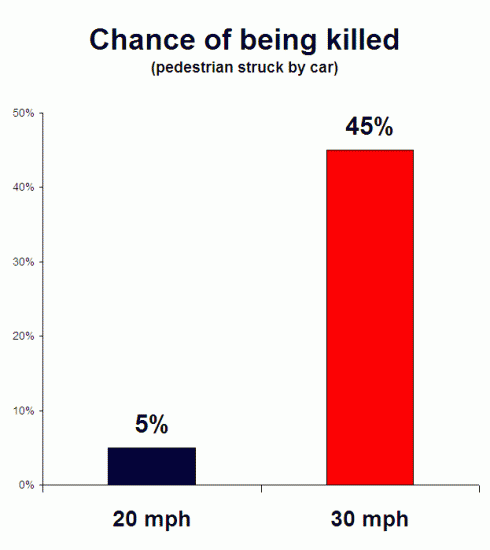It’s been nearly two years since we started getting exercised about this: It shouldn’t take expensive engineering studies for city hall to lower speed limits. Then we made the argument again. And again. Last week, Washington State relented, becoming one of the last in the Northwest to remove what had been a serious roadblock for cities and towns that sought to calm traffic, make neighborhoods safer, and reduce speed limits on residential and business non-arterial streets.
It’s a big win for anyone who finds themselves (as I have) standing in the middle of a narrow street, daring the driver (who is too important or in too much of a hurry to wait at the light one block away) to run you over as you attempt to fish a kid’s lunchbox from the back seat of your own parked car.
The Neighborhood Safe Streets Bill (HB 1045) passed the state Senate in the last minute before a cutoff deadline that would have killed it for the third year in a row. It required a special order of business led by Sen. Andy Billig (D-Spokane) to bring the vote to the floor. The bill simply allows cities to reduce speed limits to 20 mph on side streets without having to do expensive traffic engineering studies. This frees up money and capacity to make real safety improvements that reduce speeding, cut-through traffic, and possibly the chances that a Seattle mom, a 10-day old baby and grandparents would be mowed down in afternoon traffic.
That’s because lower speed limits save lives. In dramatic fashion. As the graphic below shows, the chances of a pedestrian being killed in a collision with a car increases ninefold as speed limits climb from 20 mph to 30 mph.

So while last week’s vote was great news, here’s something to ponder: Why did it take three years to pass a common sense bill that will save lives and received virtually no opposition in testimony or otherwise? After all, a version of the Safe Streets bill passed the Washington House of Representatives unanimously in 2011 and 2012. It had bipartisan support and the blessings of cities, towns, AAA, the AARP, children’s organizations, public health experts, and the Bicycle Alliance of Washington.
In this case, voters decided last November to oust longstanding Senate Transportation Committee Chair Mary Margaret Haugen (D-Camano Island), who was never interested in pushing the Safe Streets bill out of committee. But more broadly, the structure of our political system currently gives minority factions the power to put even common sense solutions with wide support in a stranglehold. So to see more wins like these, it’s time to work on changing the rules of the game.


Comments are closed.